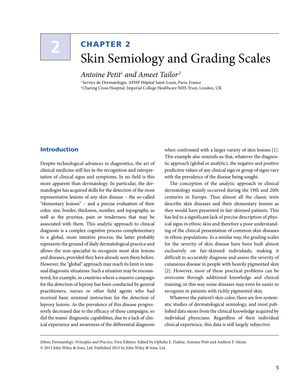Skin Semiology and Grading Scales
March 2013

TLDR The document concludes that dermatology training and grading scales need to better represent dark-skinned individuals to improve diagnosis and assessment of skin conditions.
The document from 2013 highlights the inadequacies in dermatological training and grading scales for skin diseases, which are primarily based on fair-skinned individuals, leading to challenges in diagnosing and assessing skin conditions in patients with darker skin tones. It points out that pigmentary disturbances such as "dark spots" from acne and early hypo-/achromia of systemic sclerosis, which are more prevalent in dark-skinned individuals, are not adequately represented in current grading scales. This lack of representation can result in inaccurate diagnoses and assessments of disease severity. The document calls for more inclusive clinical training and the development of grading scales that consider the specific characteristics of ethnic skin. It also emphasizes the importance of using clinical photographs that represent a range of skin phototypes to improve the accuracy of skin disease grading in patients with richly pigmented skin.
